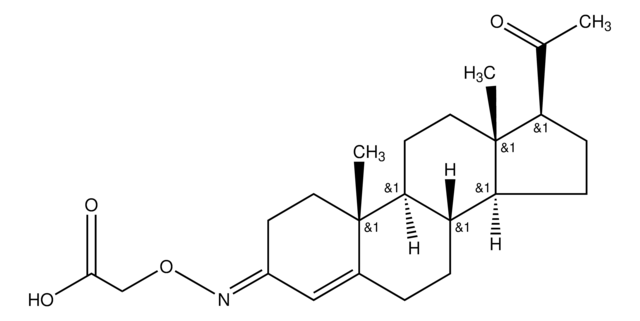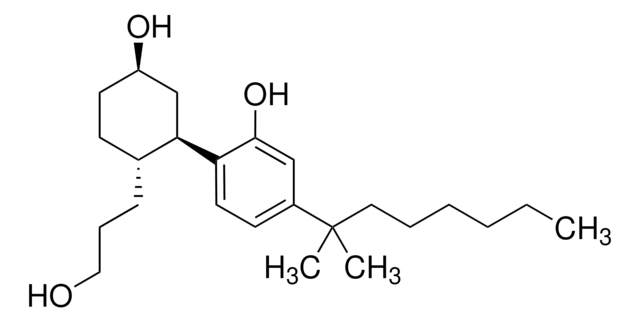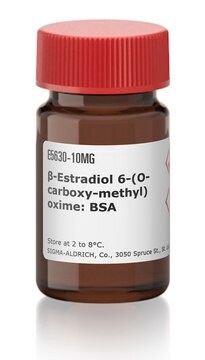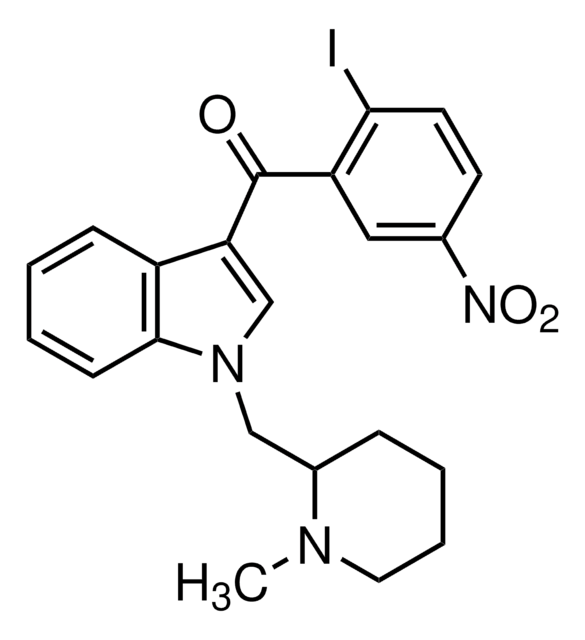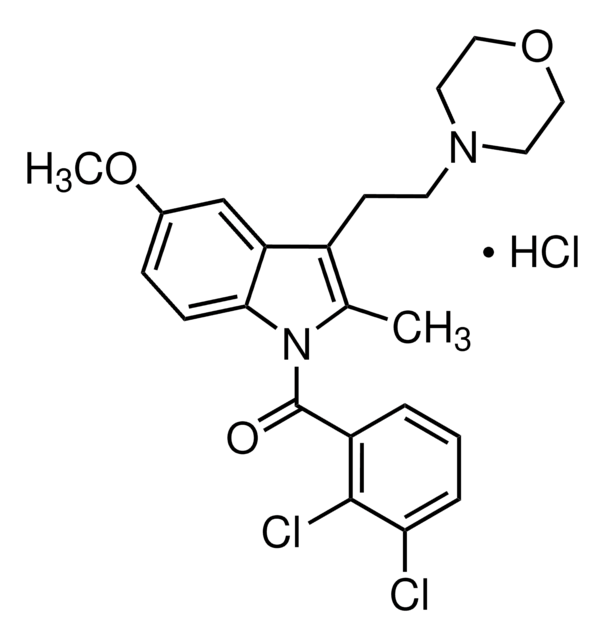W102
(R)-(+)-WIN 55,212-2 mesylate salt
≥98% (HPLC), powder, CB2 agonist
Synonyme(s) :
WIN552122 mesylate
About This Item
Produits recommandés
Nom du produit
(R)-(+)-WIN 55,212-2 mesylate salt, ≥98% (HPLC)
Niveau de qualité
Essai
≥98% (HPLC)
Forme
powder
Contrôle du médicament
regulated under CDSA - not available from Sigma-Aldrich Canada
Couleur
white to beige
Solubilité
0.1 M HCl: 0.25 mg/mL
DMSO: 12 mg/mL
45% (w/v) aq 2-hydroxypropyl-β-cyclodextrin: 2.4 mg/mL
0.1 M NaOH: insoluble
H2O: insoluble
Chaîne SMILES
CS(O)(=O)=O.Cc1c(C(=O)c2cccc3ccccc23)c4cccc5OC[C@@H](CN6CCOCC6)n1c45
InChI
1S/C27H26N2O3.CH4O3S/c1-18-25(27(30)22-9-4-7-19-6-2-3-8-21(19)22)23-10-5-11-24-26(23)29(18)20(17-32-24)16-28-12-14-31-15-13-28;1-5(2,3)4/h2-11,20H,12-17H2,1H3;1H3,(H,2,3,4)/t20-;/m1./s1
Clé InChI
FSGCSTPOPBJYSX-VEIFNGETSA-N
Informations sur le gène
human ... CNR1(1268) , CNR2(1269)
Description générale
Application
Actions biochimiques/physiologiques
Caractéristiques et avantages
Notes préparatoires
Informations légales
Code de la classe de stockage
11 - Combustible Solids
Classe de danger pour l'eau (WGK)
WGK 3
Point d'éclair (°F)
Not applicable
Point d'éclair (°C)
Not applicable
Équipement de protection individuelle
Eyeshields, Gloves, type N95 (US)
Faites votre choix parmi les versions les plus récentes :
Déjà en possession de ce produit ?
Retrouvez la documentation relative aux produits que vous avez récemment achetés dans la Bibliothèque de documents.
Les clients ont également consulté
Notre équipe de scientifiques dispose d'une expérience dans tous les secteurs de la recherche, notamment en sciences de la vie, science des matériaux, synthèse chimique, chromatographie, analyse et dans de nombreux autres domaines..
Contacter notre Service technique
